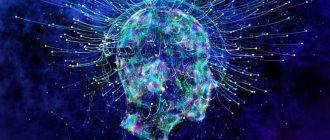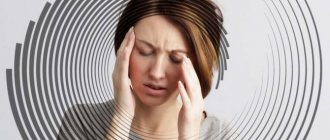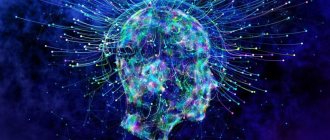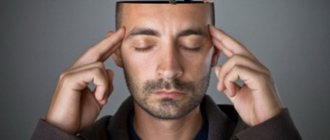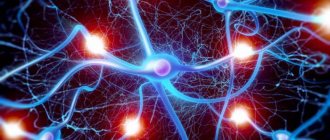A severe mental condition is confusion. The same reasons lead to the appearance of different types of this condition. Symptoms depend on exactly how the clouding of consciousness manifests itself. The treatment is considered long and deep.
All people are familiar with clouding of consciousness. It often occurs when a person transitions from wakefulness to sleep. Because this transition is virtually invisible, people can rarely detect it. There are individuals who experienced clouding of consciousness, which was mainly associated with illnesses that existed at that time. In a state of physiological weakness, exhaustion and disturbances in the body, a person could feel clouded consciousness.
However, the online magazine psytheater.com will examine precisely the clinical manifestation of confusion when a person is seriously ill with this disorder. How does it manifest itself? How to recognize it? Is it possible to cure clouding of consciousness? Everything will be discussed below.
Blackout
Stupefaction is a form of disturbance of consciousness that lasts minutes, hours, days, sometimes weeks.
This condition, like a mental disorder, manifests itself in the inability to think clearly, and can also vary between a state where a person confuses places, people, events, time until losing contact with reality itself. This can happen to anyone, regardless of age.
Clouding of consciousness manifests itself in changes in mental activity and has many causes.
Blackout causes
This condition can occur due to head injuries or insufficient supply of oxygen or blood to the brain, which often occurs during a blow.
Confusion and its causes: progressive brain degeneration (Alzheimer's disease), low or very high blood sugar levels, severe mental and emotional shock, dehydration, high temperature up to 40˚C, brain infections (meningitis), urinary tract infections , drinking significant amounts of alcohol and exceeding the permissible limit of doses of sedative medications.
Stupidity symptoms
The symptoms of this condition include the following manifestations: lack of perception of other people, agitation, disorientation, hallucinations, personality changes, and mood changes; sudden subdepressive mood, strange behavior or irritability, decreased activity, loss of interest in usual activities, long-term memory loss, lack of personal hygiene, difficulty concentrating on a simple task, difficulty thinking and speaking, unpredictability in behavior.
This condition is characterized by a combination of the following symptoms: detachment from reality, inability to adequately perceive the world, complete or partial disorientation in place, time and surrounding persons; mild degree of incoherent thinking; complete or partial impossibility of correct judgments; partial or complete forgetting during this state.
Syndromes of confusion
The main syndromes of stupefaction include: delirium, oneiroid, amentia, stupor, and twilight stupefaction. A psychiatrist treats these conditions.
Delirium is an acute psychosis that is accompanied by severe agitation, as well as disturbance of orientation in place, in time, or colorful illusions and hallucinations. At the same time, the patient’s assessment of his own personality is preserved.
Amentia is a syndrome of clouded consciousness, which is characterized by a fragmented perception of the surrounding world. Amentia is marked by a deep degree of confusion and is characterized by a loss of orientation in the environment, as well as in one’s own “I”.
In this state, the patient is completely inaccessible for contact and his thinking is incoherent. The patient experiences fragmentary perception disorders (hallucinations or illusions). The mood of patients is unstable, tearfulness or unmotivated cheerfulness is noted.
This condition can last for weeks or months with short intervals.
Twilight stupefaction is a condition in which patients perceive only certain fragments of reality, while reacting in the most unexpected way. Patients show viciousness and aggression. During this period, contact with such people is significantly difficult.
The presence of hallucinations during this period can only be guessed from the patient’s very behavior. People perform certain automatic actions: dress, undress, eat, smoke, make calls, dance. After returning to a normal state, a person usually forgets about his actions.
Twilight stupefaction, as a special type, begins acutely and also suddenly stops. Such a sick person poses a social danger due to possible frightening hallucinations and delusions. A feature of twilight clouding of consciousness is their erasure, short duration, rapid transition from one state to another, as well as the presence of mixed states.
Oneiric or dream stupefaction is characterized by duality: on the one hand, there are vivid hallucinatory images, and on the other hand, there is a fragmented perception of reality. Patients seem to see themselves from the outside (a waking dream).
Visions appear from previously experienced life events, films, and books read.
Oneiric clouding of consciousness can be marked by a dual orientation: patients understand that they are in a hospital, but also consider themselves to be participants in fantastic events.
Stunning is a syndrome in which consciousness is turned off and the patient’s perception of external stimuli is weakened. Patients react late to the surrounding situation and questions. They are indifferent, lethargic to everything that happens, slightly inhibited.
The increasing severity of the disease can lead to stupor (numbness) or coma. The coma state is characterized by loss of all types of orientation, as well as responses to all external stimuli. After emerging from a coma, patients do not remember what happened to them.
Loss of consciousness is observed in liver and kidney failure, diabetes, and other diseases.
Treatment for confusion
If there is a suspicion of confusion, the patient must be taken to the hospital, and the person must not be left alone. Transporting a patient with an upset consciousness is difficult due to the occurrence of aggressive states of excitation. Therefore, there must be at least three accompanying people.
During transportation, healthcare workers administer stimulant drugs intramuscularly to support the cardiovascular system as needed. Treatment in the hospital is directed at the physical illness, since it worsens the mental state.
If the patient is in acute psychosis, he is placed in a separate room.
Has the clouding of consciousness struck suddenly and you don’t know how to react? First of all, calm down. If this happens to someone you know, call a doctor immediately. You should be alerted first of all to complaints of head injury, dizziness, numbness, weakness, ringing in the ears, speech disorder, blurred vision. Such manifestations may be signs of a stroke.
Moderate confusion and first aid includes a calming conversation with the person. The patient needs to be put to bed and talked to about the present reality (what day is it today, who he is, where he is). It is not recommended to give sedatives as they can be harmful.
Confusion in a child occurs at high temperatures. If this happens to a child, then place him on the bed, making a side rail to prevent him from falling. Be there all the time. Don't disturb him. For high fever, give a drug containing Paracetamol, but not Aspirin. Consult your doctor about further treatment.
Psychoneurologist Hartman N.N.
Doctor of Medical and Psychological
Locked-in syndrome
Locked-in syndrome reflects a patient's condition in which consciousness is preserved, but contact with him is impossible due to bilateral paralysis of all parts of the body, with the exception of eye movements, with which the patient encodes his response.
Various diseases can lead to this condition, which results from bilateral damage to the corticospinal tract between the midbrain and the pons or from massive damage to the lower motor neurons (anterior horns of the spinal cord).
Stupidity - causes, symptoms, treatment
The state of the brain affects the functions of the entire body. In particular, many may experience various types of clouding of consciousness. There are many reasons for loss of consciousness, as well as the symptoms of its manifestation. If frequent cases or prolonged darkness occur, treatment is required.
What is clouding of consciousness?
A change in the mental activity of the brain, in which a person cannot think, becomes disoriented, partially or completely loses contact with reality, is called stupefaction. In practice, this condition can last from several minutes to several weeks. Most often, confusion lasts for minutes or days.
This disorientation can happen to absolutely anyone, regardless of age, gender and other factors. The main reasons are those that affect the activity of the brain.
The psychiatric help website psymedcare.ru identifies several forms of manifestation of clouding of consciousness, which affects the duration and even the content of the condition:
- Delirium, occupational delirium, delirium or confusion.
This state is characterized by a person’s active participation in what he sees and hears. We are talking about the hallucinations that happen to him. At the same time, he reacts to them with emotions very clearly. Sometimes he can cry, sometimes he can laugh. Mood changes are very rapid in a short period of time.
A person with delirium is very active. He may run away from someone, chase someone, talk to someone, etc. The patient’s speech is abrupt, inconsistent, and incomprehensible to others.
Hallucinations during delirium are visual, tactile, auditory. A person can periodically return to normal. However, he may partially or not remember anything at all. The patient is disoriented only in the surrounding area and faces, but he understands well who he is.
If delirium progresses, then a professional form of pathology develops, in which the individual performs habitual, monotonous actions related to his work. Hallucinations may be absent.
Delirium manifests itself in the form of muttering, uncoordinated actions, and agitation. The movements resemble the desire to take something away or pull it over oneself.
Delirium comes in various degrees. All of them indicate the depth of the pathology. If a person recovers, he usually cannot remember what happened to him.
- Oneiroid, dream stupefaction, oneiric state.
This condition is accompanied by vivid visual hallucinations of a fantastic nature. It seems to a person that he finds himself in a certain world that lives according to completely different laws and rules than reality. Fantasies may overlap with the surrounding reality or not be based on it at all.
With oneiroid, a person is usually either excited or inhibited. His expression becomes frozen, he says nothing, does nothing. So-called catatonia occurs.
When a person comes to his senses, he clearly remembers everything he saw. He can talk about what he saw to those around him, both in fragmentary memories and in completely consistent ones. At the same time, the patient is absolutely convinced that everything that happened was real (just as with delirium). However, after a few days or weeks, this conviction passes.
- Amentia, amentive stupor.
A person in this state becomes disoriented in absolutely everything (terrain, time, self). He sees hallucinations, which are accompanied by delusions, but these phenomena do not affect his behavior.
A person does not reason well in this state. His speech is very fast, but fragmented and incoherent. The mood is unstable, predominantly negative.
A person’s behavior with amentia is agitated, but quickly gives way to short-term catatonia. Movements are unfocused, sweeping, inconsistent.
Amentia is a deep clouding of consciousness in which a person almost never returns to a normal state. Delirium may occur periodically. If a person recovers, he remembers absolutely nothing of what happened to him.
- Twilight stupefaction.
A person gets lost in space and time, but at the same time retains his usual actions, which allows him not to stand out among other people. This condition can last for several minutes or even days.
If the condition becomes acute, then the person begins to be aggressive, excitable, sad, talkative, and afraid. He becomes furious and even cruel, his actions are directed against the people around him. But when the psychosis passes, the person does not remember anything.
Drowsy stupefaction is accompanied by a sharp awakening from sleep, the performance of automatic actions against a background of fear and against surrounding people. A few minutes later the person falls asleep again, after which he does not remember anything or vaguely remembers what happened.
This state is short, but very bright. Usually occurs before an epileptic seizure. Hallucinations occur in various formats; even the background and color of the surrounding world change. In this case, the person is completely disoriented in space, time, even in his own body.
The person freezes, does not move, and everything that happens is remembered very well. A person in a state of aura does not notice what is happening in the surrounding reality. At the same time, he perfectly remembers everything that happens during the aura.
Here a person becomes inactive, indifferent, inhibited, silent. A state of drowsiness is created in which a person answers questions inaccurately or does not enter into dialogue at all. In this case, there are no affects, delusions, hallucinations, etc.
A mild form of stunning is called nullification. As the condition progresses, the person generally stops paying attention to words and physical influences from the outside, reaching a state of coma.
Causes of confusion
Usually, all causes of clouding of consciousness come down to improper functioning of the brain. However, without accompanying factors, the brain would not produce such pathologies. CNS diseases, infections and intoxication can lead to amentia, delirium or obtundation. Oneiroid is a consequence of schizophrenia, and twilight is a consequence of epilepsy or traumatic psychosis.
Confusion is a consequence of:
- Head injuries.
- Dehydration.
- Severe emotional shock.
- Low or too high blood sugar.
- Alcohol poisoning.
- Temperature rises above 40 degrees.
- Progressive brain diseases.
- Poor blood or oxygen supply to the brain.
- Genital tract infections in the elderly.
- Infection affecting the brain.
- Abuse of various medications.
Symptoms of confusion
You can recognize clouding of consciousness by the following symptoms:
- Hallucinations.
- Disorientation.
- Excitation.
- Difficulty speaking, inability to think clearly.
- Memory losses.
- Failure to perceive the surrounding reality.
- Loss of interest in favorite activities, stupor.
- Unpredictable behavior.
- Lack of personal hygiene.
- Rapid changes in mood or personality.
- Inability to concentrate on a simple task.
Confusion must be diagnosed by doctors who check for symptoms and make a diagnosis based on:
- The existing detachment, partial or complete, from reality.
- Partial or complete inability to remember what happened in an altered state.
- Partial or complete disorientation in space, time, self.
- Inability to think soberly, remember, or draw adequate conclusions.
Treatment of confusion
If a person is diagnosed with stupefaction, then he is hospitalized in a psychiatric hospital. When transporting, he must be accompanied by a nurse and paramedic. If there is an excited state, then the patient is accompanied by at least three people.
Treatment involves the use of drugs to support the cardiac and respiratory systems. Depending on the type of darkened state, specific medications are prescribed exclusively by a doctor and under his supervision.
If a person experiences a single case of confusion, then an ambulance should be called to provide first aid for head injuries. When the person returns to consciousness, there is no need to disturb him; it is better to let him lie down and rest.
Each case is individual. The doctor must examine the person and make a verdict on what happened to him and how it should be eliminated. Confusion cannot be treated with folk remedies at home, so you should avoid the desire to fix everything yourself.
Forecast
Confusion is a serious pathology that requires treatment. In severe cases, clouding of consciousness is eliminated in psychiatric hospitals with the help of medications. In milder forms, clouding of consciousness can be an isolated case, which will simply be an incomprehensible event in a person’s life.
The prognosis is favorable if a person seeks help when he realizes that something bad is happening to him, or his relatives use medical services. If the pathology is not treated, then the development of pathology and its progression is quite possible.
Doctors must first observe the patient and identify all somatic manifestations of confusion in order to distinguish this condition from coma or stupor. When a diagnosis is made, specialized treatment is prescribed. It is better to keep the patient under the supervision of doctors who know how to act in emergency situations.
Loved ones need to be patient and, most importantly, not to be afraid. All people experience fears. A person may have more than one fear, but several. It's completely normal to be afraid of something.
Trying to get rid of such experiences is already becoming abnormal. Fear is an instinctive feeling that is inherent in nature to protect a person from death. Every day he is exposed to one danger or another.
The feeling of fear allows him to protect himself from these dangers.
But there is another type of fear, which is called social, or developed. A person is afraid not of what may threaten him with death, but of what is associated with psychological, emotional or material discomfort.
He is afraid that he will not get a job, that his partner will not like him. He is worried about taking exams. He is frightened by the opinions of the people around him. These types of fears do not threaten death.
They are the interfering factor that needs to be gotten rid of.
You should read other articles and books about how to get rid of fear. But until you achieve victory in the fight against your “social” experiences, it is better to use the tactics of successful people.
The main thing is not to remove, not to get rid of fear, but to act despite your emotions. You can continue to be afraid, but act, do the right things. It is difficult to get rid of anxious thoughts and program yourself in advance to be fearless.
You can talk about wasting time while you try to remove your fear. This is a feeling that expresses your attitude to what is happening. What happens if the situation changes? Your emotions will change too.
Take action, change the situation, solve problems - the fear will go away on its own.
Don't listen to your own experiences. All people are tormented by fears and doubts. But successful representatives don't waste energy trying to get rid of them. They act to resolve those situations that cause unpleasant emotions.
Use this approach. You can get rid of fear, or you can simply ignore it. If nothing threatens you with danger, then all worries and doubts can be pushed into the background. Just don’t listen to your own emotions that overcome you, but act, perform the planned actions. Then fear will not be a hindrance for you.
Stupidity: what it is, symptoms, causes, treatment
Stupefaction is a person’s disorientation in space and time, which can be accompanied by a violation of self-identification, as well as delusions and hallucinations.
There may be a short-term, transient state of confusion that is not associated with medical problems. For example, while falling asleep, after a sudden awakening, especially during dreams, etc.
After a few seconds, or at most minutes, consciousness is completely restored.
However, if such a condition lasts for several hours, days or even weeks, and is aggravated by increasingly greater manifestations of disorientation, we are talking about diseases or disruption of brain activity.
Classification of conditions
Stupefaction can be of different types, depending on the depth and type of disturbance.
A relatively mild form of darkened consciousness is considered to be stunned, in which a person does not respond to verbal appeal to him, but retains reactions to touch, injection, heat, etc.
This condition is not accompanied by hallucinations or dangerous behavior. But it is dangerous because it can turn into stupor and coma. The following types of darkness pose an even greater danger.
Delirium
Delirium, or delirious syndrome, is a disorder characterized by hallucinations. Most often they have negative content and can even frighten the patient.
During these visions, the patient is active, makes various movements, and reacts emotionally to what he has dreamed. Most often he defends himself from insects, animals, dragons, aliens, etc. Hallucinations are perceived by a person as if they were real events.
These can be vivid memories, detailed scenes involving people or animals.
In a state of delirium, the patient is talkative, but speech may be incoherent and fragmentary. Some people limit their expression of emotion to exclamations. From time to time consciousness clears up, this is especially typical in the morning hours immediately after waking up. In vespers and at night, on the contrary, clouding of the mind becomes more active.
Visual (true) hallucinations are most often observed, but tactile and auditory hallucinations are also possible. Self-awareness is not impaired, but events and the environment are perceived inadequately. For example, the patient is in an apartment, but it seems to him that he is in a public place, or vice versa.
Delirium is characterized by frequent changes in a whole range of emotions, from fear and panic to euphoria and delight.
Occupational delirium is characterized by isolation and monotonously repeating movements that imitate various types of professional activity (typing, chopping wood, sawing, hammering nails, knitting, etc.).
Motor hyperactivity develops, but hallucinations significantly decrease or disappear. At the same time, a person further loses the ability to navigate in time and space, as well as contact with the outside world.
With muttering or exaggerating delirium, a person constantly mutters something incoherent, makes small movements: fumbles through the blanket and clothes, pulls them, etc. It is characteristic that later the patient completely does not remember anything that happened during the attack around him and with himself.
Oneiroid
Oneiric disorder is even more serious. It is also associated with hallucinations, but with oneiroid visions are fantastic in nature and not necessarily negative in content.
The person who experiences them can then, with varying degrees of coherence, recreate the dreamed pictures. As a rule, they are all associated with great things and great people.
During the visions, the patient either saves the Galaxy, then performs another important mission, then meets Napoleon (or any other historical figure), then he himself reincarnates as one of the historical figures.
It is not difficult to distinguish a person in the oneiroid state by his immobility and frozen gaze. Only the expression of the eyes changes, expressing either amazement, delight, curiosity, or fear.
Visions with oneiroid resemble a waking dream. Fantastic pictures can fit into a real environment. The person is completely detached from the world, absorbed in visions. People who awaken from hallucinations remember (completely and fragmentarily) the illusory world they dreamed of. Oneiroid often accompanies a mental illness such as schizophrenia.
Amentia
Amentia is a condition that lasts for weeks without clearing up. In the evening hours it can turn into delirium. It is characterized by complete amnesia for experiences and events occurring during the amentive period, impaired thinking, and suppressed analytical ability. This condition develops gradually and does not arise suddenly, unlike twilight.
The patient is so disoriented in place, time, events and his own personality that he experiences confusion and helplessness. There are mood swings from tearfulness to enthusiasm. At the same time, the person either freezes in immobility, or actively makes monotonous aimless movements.
Sometimes delusions and hallucinations appear, but behavior is little influenced by them. On the contrary, the patient’s speech is tied to what is happening in reality. In this state, a person is talkative, but what he says may be incoherent and incomprehensible.
Twilight
The state of twilight consciousness comes upon a person suddenly and passes just as abruptly. The attack lasts relatively short: minutes, hours, sometimes days.
People in this state are disoriented, but perform their usual actions. The disorder is not noticeable to others. Human behavior seems completely natural.
There is a special subtype of twilight - ambulatory automatism, in which a person begins to wander involuntarily.
In its acute form, the twilight state occurs with fear and sometimes aggression. The patient imagines something frightening, his speech becomes incoherent, as if he is sleeping and having a nightmare. Psychosis may occur with senseless cruel actions and fits of rage. In such a state, a person is capable of committing a crime. However, after the attack he cannot remember anything.
Particularly noteworthy is the drowsy twilight state that occurs with a sharp awakening from deep sleep. The person gets scared and begins to defend himself, sometimes quite aggressively.
He can throw objects, scream, shield himself with his hand or a blanket, try to hit the person who woke him up, knock over objects by jumping up.
After a few minutes everything passes, and he either calms down or falls asleep again.
Twilight stupor can be observed with head injuries, as well as epilepsy.
Aura
The aura condition is experienced by patients with epilepsy shortly before an attack. The patient remembers the emotions he experiences, while events in the real world are not perceived or are remembered fragmentarily. During an attack, a person freezes, immersing himself in himself, he is occupied only by his own experiences.
He perceives the world not adequately to reality: the color and contrast of objects seem brighter, colored spots and dots flash in the eyes (photopsia), there may be visual, sound and taste hallucinations.
Depersonalization of oneself occurs, a feeling of being someone else, and a feeling of a changed body structure appears.
Characteristic symptoms
Diagnosis of clouding of consciousness is based on the principle of the presence of four signs:
- Detachment from the outside world, fragmentary and inconsistent perception of current events, reduced ability to analyze them.
- Absorption in one’s own experiences, causing disorientation in time and space; The ability to identify familiar places and people may be impaired.
- Violation of logic, thinking, amorphous and inconsistent judgments, loss of some information when constructing logical chains.
- Memory lapses, up to complete amnesia, both of external events and of one’s own experiences during the period of darkness.
In moments of darkness, the outside world does not care or interest a person. The degree of clouding of consciousness is directly related to the depth of the patient’s immersion in his own internal experiences.
Pictures emerge inside his consciousness that captivate him and evoke one or another emotional response. Behavior can be quiet, inactive, or, conversely, varying degrees of activity.
In some cases, the patient shows aggression towards others.
The most important external sign of clouding of consciousness is a frozen facial expression, lack of facial expressions. With some types of darkness, facial expressions can be active, but the person’s gaze still remains immersed “inward.”
It is important to understand the difference between the inner world of a sick person and the experiences of a healthy person. In the case of darkness, we are not talking about the world of a dreamer who invents for himself the world in which he would like to exist, and either sets goals or enjoys dreams.
There is nothing painful in either case. But with a darkened consciousness, visions are “slipped” to a person by his brain. This happens against the will of a person. The stronger the disorder, the more difficult it is for the illusory world to be controlled by consciousness.
Often this is not a pleasant world, but a destructive and frightening one.
First aid for impaired consciousness
The main rule: a person in a darkened consciousness should never be left alone. With a clouded mind, a person cannot help himself; the help of loved ones is needed.
If the patient experiences psychomotor agitation, you need to try to calm him down and persuade him to lie down. In the opposite case, when frozen and immobile, in order to maintain a person’s connection with reality, you should talk to him. Conversation topics should be simple.
For example, you can ask the patient what his name is, how old he is, where you are with him now, what month it is, etc.
If there is a danger of a negative perception of such questions, you can talk about the weather, terrain features, and ask questions about a subject familiar to your interlocutor.
You should call an ambulance as soon as possible. A person with clouded consciousness must be hospitalized. Most often, the place of his treatment is the psychiatric department of the hospital.
It is imperative to inform doctors if the patient is in an excited, especially aggressive, state. In this case, at least three people must accompany him to the hospital.
Often, patients in a state of delirium, oneiroid, or twilight stupor are not able to behave adequately, much less be aware of their illness and the need for treatment.
As a result, patients may resist doctors, nurses, and anyone else who tries to help them. Hysterical and even criminal behavior is possible.
After a head injury as a result of an accident, weakness, dizziness, and bleeding may occur. It is urgent to call an ambulance.
Treatment
A specialist doctor can suspect a patient’s state of darkened consciousness. Most often this is the lot of neurologists, traumatologists, narcologists, and psychiatrists.
Treatment is carried out on an outpatient basis and is primarily related to psychiatry. If eclipse of the mind occurs against the background of alcoholism, neurological dysfunction or head injury, then, in addition to relieving symptoms, the underlying disease is treated. If the temperature is high, the patient should be reassured, put to bed and given paracetamol (but not aspirin).
Treatment also depends on the severity and general condition. If the severity of the darkness is not higher than average, and the patient’s behavior is not criminal (does not threaten subsequent legal proceedings), he just needs to be calmed down with a conversation. Mild disorders may not require specific medication treatment.
Stupidity: what types are there?
Blurred consciousness refers to its qualitative disorders and is a sign of serious problems with the functioning of the brain. There are several types of darkness, differing in the depth and content of pathopsychological symptoms.
Identification and treatment of such disorders in patients is most important for psychiatrists, narcologists, neurologists, toxicologists and resuscitation specialists, but doctors of other specialties may also encounter this problem.
What types of clouding of consciousness exist will be discussed in this article.
What happens during clouding of consciousness
Clouding of consciousness is its disintegration with a decrease in the level of perception of external stimuli and the filling of a person’s “internal space” with pathological psychoproductive phenomena. At the same time, a person’s behavior changes, which is determined by the depth of immersion in one’s own experiences and the visible response to them.
The main clinical signs of confusion are:
- detachment from the outside world, while the perception of ongoing events is fragmented and inconsistent, and the analysis of these external stimuli is sharply reduced;
- disorientation in space and time due to the patient’s immersion in his experiences, it is noted that the patient partially or completely does not recognize familiar people and familiar surroundings;
- disturbances in thinking with its incoherence, inconsistency, amorphism, fragmentation;
- memory deterioration to varying degrees, up to amnesia of everything that happens during the period of darkened consciousness, including one’s own experiences.
To diagnose confusion, all 4 of the above signs must be present. Hallucinatory and secondary delusional disorders are also often detected.
Experiences during the period of stupefaction are perceived by the patient as real. They replace the events of the surrounding world or are felt as more vivid, absorbing all the patient’s attention.
Sometimes this is accompanied by a lack of self-awareness and a feeling of alienation.
Individual memories of the experiences experienced may persist for some time, their vividness and detail depend on the type of disorder suffered.
Subsequently, they lose relevance, but criticality towards them almost never reaches a sufficient level.
But in some cases, the exit from the state of darkened consciousness is accompanied by complete amnesia for this period; the patient may note a failure in personal perception of time.
Stupidity: classification
Qualitative disorders of consciousness are divided into:
- delirium (delirious stupor or state), including the so-called professional delirium;
- oneiroid (oneiric, or dream stupefaction);
- amentia (amentive darkness);
- twilight states of consciousness (twilight), including several varieties;
- special states of consciousness: various types of aura, which is a paroxysmal form of clouding of consciousness.
It is not always possible to carry out an adequate differential diagnosis during the initial examination of a patient with confusion. The primary goal is to exclude quantitative disorders (stunning, stupor and coma). Clarification of the type of stupor is sometimes carried out on the basis of dynamic observation and retrospective analysis with the patient’s self-report.
Etiology
Impaired consciousness is a manifestation of dysfunction of the hemispheres, the upper parts of the brain stem, or both areas simultaneously. Thus, local damage to supratentorial structures can be widespread, or, causing edema, it can displace brain structures, leading to transtentorial herniation, compression of the diencephalic parts of the brain and disruption of the function of the diencephalic activating system.
- Primary subtentorial processes (brainstem and cerebellum) can compress or directly damage the reticular activating system between the mid-portions of the pons and the diencephalic region.
- Metabolic or infectious diseases can have a depressing effect on the function of the hemispheres and brainstem through abnormal levels of blood components or direct toxic effects.
- Impaired consciousness can also be observed when there is a violation of cerebral circulation (syncope and heart attack) or when there is a change in the bioelectrical activity of the brain (epilepsy). Inadequate cerebral blood flow and chemical imbalances in the blood can also cause abnormal electrical activity in the brain.
- Concussions and psychological disorders cause impairment of consciousness without visible structural changes in the brain.

